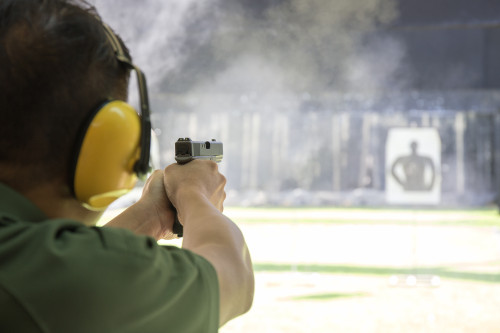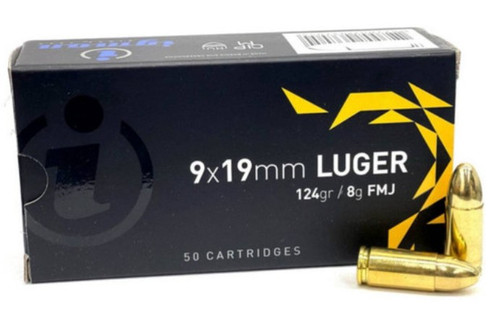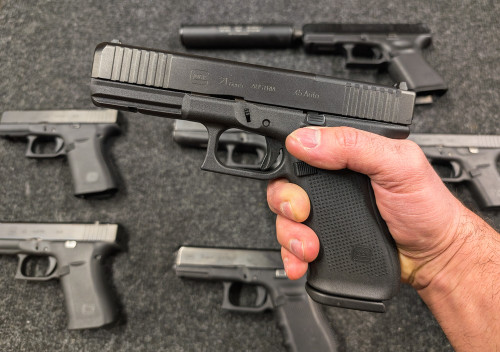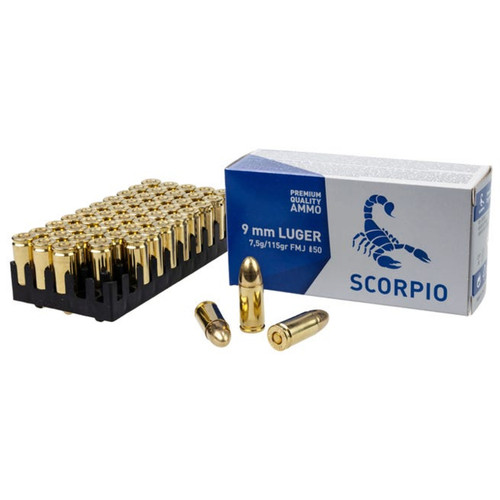When you’re looking at buying a rifle optic, it's important to keep your goals in mind. Are you trying to build a firearm with quick target acquisition for close-up shooting? Maybe you’re more interested in reaching out and touching a target at long range. In most cases, those are really your only two options when searching for the perfect optic for your gun.
But what if there was a third option? Enter the LPVO, or “Low Powered Variable Optic.” Designed to bridge the gap between up close and personal shooting and long-range engagements, LPVOs exist in a league of their own. It may be exactly what you’re looking for to upgrade visibility with your rifle. Let’s explore the world of LPVOs, so you can find the perfect one to buy for your firearm.
What Is an LPVO?
Designed as a sort of a middle ground between red dots and full-fledged scopes, LPVOs first appeared in the 1990s as a solution to problems soldiers experienced fighting in Mogadishu. The military realized that much of their fighting was happening in urban areas, where operators needed to be able to both clear a house and acquire targets down a long city street. Thus, the LPVO was born.
Even if you’ve never used an LPVO before, you’ll notice their distinctive appearance. They feature a big eyepiece with a small objective lens. This design attempts to give a shooter the best of both a red dot and a rifle scope, offering a combination of quick target acquisition, long eye relief, and moderate zoom capabilities.
LPVO Magnification and Range
Generally, LPVOs can telescopically zoom between 1x and 6x magnification (although some only zoom in to 4x, and others now provide 8x or even 10x zoom). That allows the average shooter to hit targets at ranges that span between a few feet and a few hundred meters. Although they do have some medium-distance capabilities, LPVOs are not necessarily designed for long-range shooting.
What Firearms Can Use an LPVO?
The LPVO was designed with the AR-15 platform in mind, but that doesn’t make it AR-exclusive. Instead, they can greatly enhance the fighting capabilities of any tactical rifle or carbine, including a SCAR, AUG, or even some M1A variants like the SOCOM-16 or Tanker. You can even put one on an AK or a hunting rifle, provided you pick up a quality optic mount and cheek riser for the Kalashnikov.
LPVO Buying Tips
Now that you have a basic understanding of what LPVOs are and how they work, let’s look at some specific tips to keep in mind when buying one.
LPVO Reticles
First, let’s talk about reticles. Telescopic optics come in one of two flavors: front focal plane (FFP) and second focal plane (SFP). These two terms describe where the reticles are actually located on the optic.
- FFP Reticles: In spite of their name, these reticles are actually etched somewhere in the middle of the optic, between the erector tube assembly and magnification lens. FFP reticles are great at high magnification settings, since the reticle will change size as you zoom. However, they can be tough to use in low light situations. FFP reticles are generally a better choice for competitive shooters.
- SFP Reticles: SFP optics place the reticle between the erector tube assembly and the eyepiece. The reticle won’t change sizes when you zoom, making it more useful at lower magnification. SFP reticles are also easier to produce than FFP reticles, making them less expensive than their counterparts. Hunters often prefer SFP reticles as well.
You may also want to pay attention to whether an LPVO features a “minute of angle” (MOA) and “milliradians” (MRAD). A lot of this will come down to your personal preference. If you measure in imperial units (feet and inches), MOA may be a better choice. MRAD might be better if you’re already comfortable with the metric system. One thing to note, though: many pro shooters use MRAD reticles. If you want to participate in competitive shooting events, you may want to go with an MRAD optic.
How to Interpret LPVO Names
When you look at the name and basic info for any LPVO, sometimes it can feel like reading a different language. Don’t worry — once you understand each of the key traits for LPVOs, their names will make a lot more sense.
For example, let’s look at the Hardline 1-6x24 34mm MOA LPVO (we’ll take a closer look at it later on). In this case:
- “Hardline” is the model name.
- “1-6x” is the amount the optic can zoom.
- “24” describes the diameter of the objective lens, which determines how much light the scope allows in. More light = brighter picture.
- “34mm” is the tube diameter. Typically, a larger diameter means more durability, but tube diameter can also affect your ability to adjust for windage and elevation.
- “MOA” means “minute of angle,” as we said.
One last thing to keep in mind about tube diameter: not all LPVOs are the same diameter. While 30mm tubes are the “industry standard” when it comes to optic diameter, some LPVOs have bigger or smaller measurements. This isn’t really a dealbreaker, but you will need to buy different scope mounts depending on how thick your optic is.
Keep these few facts in mind when buying your LPVO scope, and everything should go smoothly!
The Best LPVO Scopes to Buy in 2023
Now, the main event! We’ll look at what we consider to be some of the best LPVO scopes you can buy in 2023. We’ve broken down 7 different LPVOs into three different categories: best budget LPVOs, best mid-priced LPVOs, and the LPVO with the best range.
Best Budget LPVOs
We’ve all gotta start somewhere. Even if you can’t afford to break the bank on a high-end LPVO, you can still get some quality glass at a good price. Specifically, we kept the price on these budget options at $500 or lower. Here are some of our favorite LPVOs that won’t require a second mortgage:
Crimson Trace Hardline 1-6x24 30mm
With the Hardline 1-6x24 Crimson Trace offers a sturdy LPVO scope at a price that rivals even the stuff from Primary Arms. However, Crimson Trace doesn’t have the same name recognition as some of the other companies on this list because they’re a bit of a newcomer to the optics game.
Originally, this company made its own line of laser sights and weapon-mounted lights, but don’t let that dissuade you. If you’re looking for a low-cost optic that will serve you well in any application, definitely consider the Hardline.
With a 1-6x zoom and 24mm objective lens, the Hardline bestows shooters with a scope that’s just as comfortable during a competition as it is in a hunting blind. It features a glass-etched, illuminated MOA reticle with great field of view, even in low light.
One knock against the Hardline is that glass may not be as clear as what you’d get from some other budget options on this list. Like many budget options, the Hardline is also manufactured overseas (Japan and China specifically). However, the company is based in Oregon and has operated there since 1994.
Specs:
- Zoom: 1-6x
- Objective Lens Diameter: 24mm
- Reticle Type: BDC, SFP, MOA, Illuminated
- Tube Diameter: 30mm
- Night Vision Compatible: No
- Price: $369 MSRP
Primary Arms SLx 1-6x24mm
If you’re not familiar with Primary Arms, it’s time to get hip. While they may not be “sexy” in the optics world, Primary Arms is known for building robust optics at an unbeatable price. That’s exactly what you get with their SLx LPVO.
When it comes to any optic, one of the most important factors to consider is glass clarity. That’s something Primary Arms can definitely deliver. Primary Arms glass is crystal-clear all the way from 1x to 6, making target acquisition a breeze.
One great thing about the SLx 1-6x24mm is its Advanced Combat Sighting System (ACSS) reticle. The ACSS makes it easy to estimate factors like the height of a target, wind holds, and how to hit a moving target. The optic is also illuminated. Although it’s not exactly “daytime bright,” it’s definitely good enough to help you acquire targets during dawn or dusk hours.
That’s not all though! Primary Arms products come backed with a lifetime warranty as well, so you can be 100% confident in your purchase.
Specs:
- Zoom: 1-6x
- Objective Lens Diameter: 24mm
- Reticle Type: ACSS, SFP, MOA, Illuminated
- Tube Diameter: 30mm
- Night Vision Compatible: No
- Price: around $300
Sig Sauer Tango MSR 1-6x24mm
Sig Sauer has enjoyed a meteoric rise since the 2000s, becoming one of the biggest civilian and military arms manufacturers in the US. Sig Sauer is unique in that they not only build guns, but also their own optics.
The Tango MSR is Sig’s take on the LPVO, and it’s nothing to scoff at. In fact, Sig’s glass is some of the clearest out there, with a crisp picture on any zoom level. That’s something that might surprise you, considering these optics are relatively inexpensive. If you get the chance, take a look through Sig’s glass yourself.
The Tango uses a BDC6 reticle, which is specialized for 5.56 and 223. That makes it a perfect companion for any AR-15 platform. It’s right at home at a shooting competition or when hunting coyotes or deer (if legal in your area).
One other great advantage for the Tango is what else comes in the box. Each Tango comes with one of Sig’s Alpha-MSR cantilever mounts, which could save you a few hundred dollars as opposed to buying them separately. The Tango also includes flip caps, which isn’t the case with some of the other entries on this list (such as Strike Eagle).
One thing that the Tango and Strike Eagle have in common is their built-in throw levers. Also known as “cat-tails,” these small attachments make it easy to zoom quickly with the flip of a finger (making it easy to zoom in and out quickly). That’s important, since LPVOs are all about high speed.
Specs:
- Zoom: 1-6x
- Objective Lens Diameter: 24mm
- Reticle Type: BDC, SFP, MOA, Illuminated
- Tube Diameter: 30mm
- Night Vision Compatible: No
- Price: around $500
Best Mid-Priced LPVOs
Now, just because we’re calling these optics mid-priced doesn’t mean they’re easy on your wallet. These options are all north of $500, making them even more expensive than some guns themselves. But you get what you pay for, with more features, clearer glass, and more reticle options showing up in this category.
US Optics TS-6X 1-6x24 FFP
US Optics may not have the same name recognition as names like EoTech (you can thank Call of Duty for that), but the company is every bit as legitimate as competitors. Like EoTech, US Optics also fills a contract to produce scopes for the military — specifically the USMC.
US Optics was actually one of the first to pioneer LPVOs, and boasts their own reticle dubbed the “MS2,” that’s designed for hunters and competitive shooters alike. This iteration of the optic has a First Focal Plane reticle, giving it an edge over some of the lower-priced options that we have on this list.
The glass quality through the TS-6x is good, although not quite the same level as the Vudu (more on that later). However, that’s what you get for almost double the price. The eyebox can be a little tight, meaning that the actual image you see from the scope can feel narrow. However, you can overcome this with practice.
One great feature of the TS-6 is its durability. This thing has got to be one of the toughest optics featured on this list. In a video US Optics posted online, one of their employees puts one of their scope through a torture test. They froze it, hammered nails into a board with it, and it still worked just fine. If you’re looking for a reliable LPVO that will stand up to any abuse, don’t sleep on the US Optics 1-6 TS-6X.
Specs:
- Zoom: 1-6x
- Objective Lens Diameter: 24mm
- Reticle Type: FFP, MS2, MOA, Illuminated
- Tube Diameter: 30mm
- Night Vision Compatible: Yes
- Price: $695 MSRP
Vortex Strike Eagle 1-8x24mm FFP
Here we come to another household name in the world of optics: Vortex. Like Sig, Vortex has extremely clear glass, making the Strike Eagle one of the most popular LPVOs available today. With that being said, the Strike Eagle isn’t exactly as clear or vibrant as the Primary Arms SLx we discussed above.
However, Vortex’s LPVO does offer a few benefits over its main opposition, the SLx and the Tango. The Strike Eagle features a 1-8x zoom, giving it extra magnification over its competitors. That’s a huge benefit for anyone who’s trying to push the limits of their LPVO in terms of range.
In addition, the Strike Eagle also features a First Focal Plane reticle. That means the size of the reticle will change as you zoom, enhancing this LPVO’s already considerable long range potential. Vortex has also developed its own unique reticle, the “Enhanced Battle Rifle” (EBR), which is particularly effective at calculating wind or target movement along with bullet drop. These factors also contribute to the Strike Eagle’s long distance capabilities.
While their products are definitely made to a high standard, the thing that really sets Vortex apart is its unlimited lifetime guarantee. You can run your Strike Eagle over with a truck, mail it to Vortex, and they’ll send you a replacement with no questions asked. One last intangible feature to consider with Vortex is that the company is both veteran- and family-owned, although they do perform much of their assembly in China.
Specs:
- Zoom: 1-8x
- Objective Lens Diameter: 24mm
- Reticle Type: FFP, EBR, MOA and MRAD, Illuminated
- Tube Diameter: 30mm
- Night Vision Compatible: Yes
- Price: $799 MSRP (however, you can find it for cheaper in some places)
EoTech Vudu 1-6x24 FFP
You may recognize EoTech’s name from their ubiquitous red dot optics. The EoTech holographic sight is one of only two optics that Navy SEALS use in their operations, which has made the company synonymous with military fighting rifles. The Vudu 1-6x24 FFP is EoTech’s foray into the world of LPVOs, and they possess the same bombproof quality you’d expect from a company the US military relies on.
EoTech certainly didn’t cut any corners with the Vudu. First things first, when you reach optics at this price point, glass quality becomes next-level. The Vudu is incredibly clear, and you’ll have no problem acquiring targets swiftly and easily with it.
Glass quality aside, this optic offers a slew of features that include an etched First Focal Plane reticle optimized for long-range shooting. Like Vortex, EoTech developed its own reticle for its LPVO. In fact, you can order a Vudu with three different proprietary EoTech reticles: the SR1, SR2, and SR3. The SR2 and SR3 are each calibrated for 5.56 and 7.62, respectively. That makes the Vudu with a SR3 reticle an awesome option if you’re trying to equip your AK or AR-10 with an LPVO.
Like the Strike Eagle and Tango, the Vudu boasts a throw lever, making it great for lightning-fast adjustments. It’s also night vision compatible, which contributes to its high price. Although, let’s face it, $1400 will be a drop in the bucket for you if you’re the kind of person who’s buying NODS. Long story short, the Vudu is without a doubt a great LPVO even if its price tag seems a little high.
Specs:
- Zoom: 1-6x
- Objective Lens Diameter: 24mm
- Reticle Type: Vudu SR1, SR2, or SR3; FFP; MOA and MRAD; Illuminated
- Tube Diameter: 30mm
- Night Vision Compatible: Yes
- Price: $1,399 MSRP
Best Ranged LPVO
We said earlier that LPVOs aren’t meant to be long range sniper optics — we’d be lying if we said that the idea of an LPVO with increased zoom didn’t excite us. That’s exactly how we’re going to round out the last LPVO on our list!
Vortex Razor HD Gen III 1-10x24 FFP
The Vortex Razor HD Gen III 1-10x24 FFP is probably one of the nicest LPVOs that money can buy right now. The Razor HD line is Vortex’s highest tier optic, featuring the clearest glass and most durable construction of any scope they make. Colors are vibrant and images are sharp. The only thing that’ll limit your performance if you use this scope on a decent rifle is your own skill level.
Like the Strike Eagle, the Razor HD Gen III boasts Vortex’s EBR reticle. This reticle is located on the First Focal Plane, too, making it great for long-range, zoomed-in shots. That’s where the similarities with the Strike Eagle end, though — this is obviously a much more powerful optic. It has the widest eye box of any reticle we’ve posted on this list, too, making it easy to acquire targets. It also comes with a throw lever to help the operator zoom quickly after picking up their target.
That FFP reticle and throw lever are great additions, since this LPVO has the added benefit of a 10x max zoom. That’s nearly twice what any other optic on this list can offer, making this LPVO a favorite among law enforcement and competitive shooters. Plus, the Razor HD Gen III also enjoys Vortex’s lifetime warranty, so you’ll never need to buy another LPVO again. You get what you pay for, though: this thing costs more than most rifles.
Specs:
- Zoom: 1-10x
- Objective Lens Diameter: 24mm
- Reticle Type: FFP, EBR, MOA and MRAD, Illuminated
- Tube Diameter: 34mm
- Night Vision Compatible: Yes
- Price: $3,599 MSRP
The Wrap-Up
With a great combination of quick target acquisition and moderate zoom capabilities, LPVOs are a must-have for any AR enthusiast. Perfectly bridging the gap between a red dot and full-fledged scope, they’re great for competitions, plinking, and many other applications.
As you make a decision about the best LPVO scope to buy for your rifle in 2023, remember that Pro Armory offers a wide selection of top-quality small-box ammo, bulk ammo, accessories, and LPVOs to meet your needs.
As a veteran-operated company, that means we give a sh*t about you. We’re not here to sell you the fanciest thing money can buy (unless you want that kind of thing). Our firearms enthusiasts are available to help you pick the best optics that balance your shooting goals with your budget.
Check out what’s in stock today to find the perfect accessories for your firearm.


























